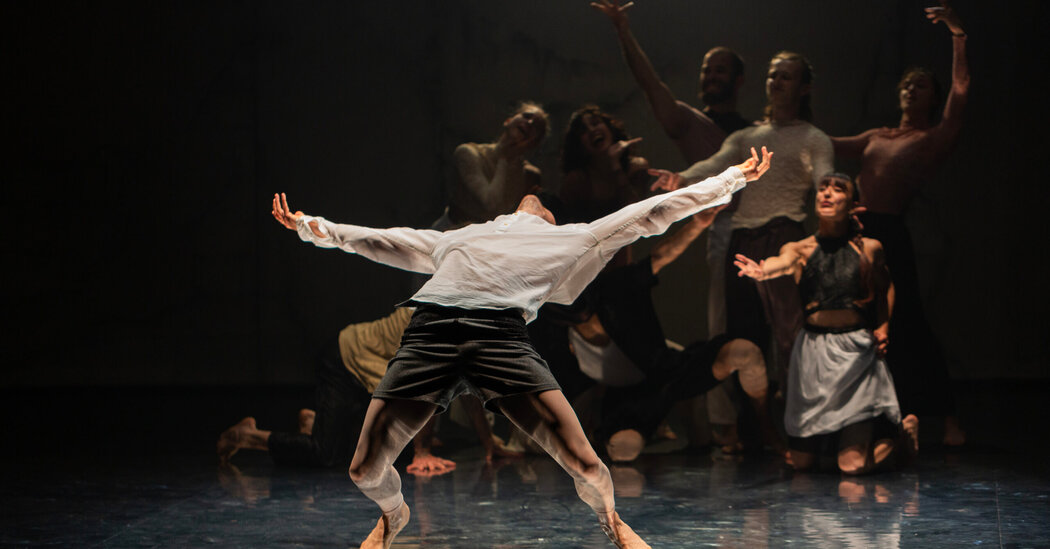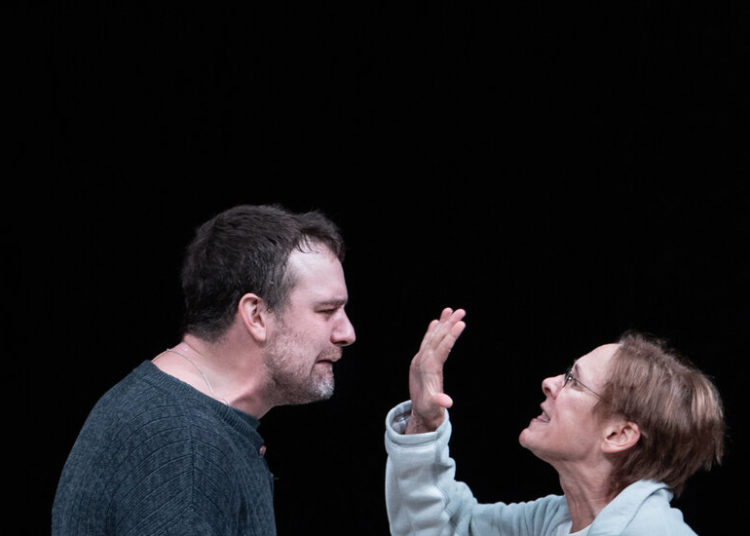“That person does not look well,” said a concerned audience member at the Joyce Theater on Wednesday, alerting an usher about a man who was clinging to a railing on the aisle, doubled over in what looked like great pain.
“Don’t worry,” the usher answered reassuringly. “He’s part of the show.”
This was 10 minutes before the start of “Le Grand Bal,” with which the French troupe Compagnie Dyptik is making its United States debut, and the show’s conceit is that the dancers are infected. The condition is like St. Vitus’s dance, a fever of involuntary movement or a collective hysteria. Whether you need to worry about the contagion spreading to you depends on your susceptibility to the concept.
It’s an unavoidable spoiler to reveal that the man clinging to the rail is not alone. More and more members of Compagnie Dyptik pop up in audience seats, jerking to life as if awakened by a defibrillator. Caught in spotlights, they twitch, manically alternating between expressions of euphoria and despair. As they gather and cavort, you might wonder which drugs they’ve taken.
The most obvious stimulus is the music, by Patrick De Oliveira. As in club tracks, the pulse of it rises and drops and rises again. At first, there’s some humor in the way the dancers keep getting caught and some haunted-house fun in how they (and the surround-sound speakers) invade the audience space.
But once the performers make it onto the stage, the fun is subsumed in a marathon endurance test. For the rest of the work’s hourlong duration, it barely ever pauses. The roller coaster of the music’s rising and dropping goes round and round, taking the tireless dancers with it.
“Le Grand Bal,” presented as part of L’Alliance New York’s Crossing the Line festival, is the latest in a spate of dances, mostly from Europe, that seem to be still responding to the forced isolation of the coronavirus pandemic and proposing rave culture as a remedy. Among these, Compagnie Dyptik’s version is relatively unsophisticated, unironically indulging in silent screams, wax-museum tableaus, hysterical laughter and strobe lights. The naïveté is both disarming and distancing. The company’s total commitment to its conceit has its own attraction.
This work also provides the latest news on the state of French hip-hop dance theater. A program note declares that Compagnie Dyptik’s artistic directors, Souhail Marchiche and Mehdi Meghari, “stand up for hip-hop in the plural form.” The dance vocabulary borrows loosely and histrionically from ballet and folk dance, with recognizable elements of breaking or popping mostly confined to impressive solo displays.
There’s nothing wrong with such ecumenism, but here it dovetails with the relentless, flogging squareness of the rave beat, sacrificing hip-hop’s rhythmic subtlety and life. (Anyone wondering what that is should see Rennie Harris’s company, Puremovement, at the Joyce next month.)
“Le Grand Bal” substitutes groove with chant, a refrain of “Para mi, para ti” (“For me, for you”) that one dancer whispers even at the end, at the bottom of a pile of his exhausted companions. The message is an open invitation, even if this isn’t everyone’s kind of party.
Compagnie Dyptik
Through Saturday at the Joyce Theater, Manhattan; joyce.org.
The post Review: To Cure the Sick, ‘Le Grand Bal’ Prescribes a Rave appeared first on New York Times.




